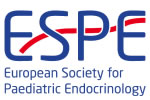hrp0086p2-p87 | Adrenal P2 | ESPE2016
Urosepsis or Pseudohypoaldosteronism in a Neonate?
Gruber Noah , Lahav Einat , Kassif-Lerner Reut , Pinhas-Hamiel Orit
hrp0095p2-159 | Growth and Syndromes | ESPE2022
SHOX haploinsufficiency among patients with idiopathic short stature
Kedar Tal , Marek-Yagel Dina , Gruber Noah , Mazor-Aronovitch Kineret , Pinhas-Hamiel Orit , Yeshayahu Yonatan
hrp0092fc1.6 | Diabetes and Insulin Session 1 | ESPE2019
A Novel Biochemical Marker, Fatty Acid-Binding Protein 4, in Diabetic Ketoacidosis in Children
Gruber Noah , Ron Idit , Sheinvald Sharon , Tirosh Amir , Pinhas-Hamiel Orit
hrp0092rfc5.5 | Thyroid | ESPE2019
A Novel Mutation in the Thyroglobulin Gene Leading to Neonatal Goiter and Congenital Hypothyroidism in an Eritrean Infant
Stern Eve , Kassif Eran , Schoenmakers Nadia , Gruber Noah , Pinhas-Hamiel Orit , Yeshayahu Yonatan
hrp0082p2-d1-289 | Bone | ESPE2014
Pseudohypoparathyroidism Type 1A Due to Novel GNAS Mutation
Levy-Shraga Yael , Gruber Noah , Mazor-Aronovitch Kineret , Modan-Moses Dalit , Pinhas-Hamiel Orit
hrp0095p1-515 | Growth and Syndromes | ESPE2022
Distinct Growth Characteristics in Angelman Syndrome
Daka Ayman , Heimer Gali , Lapidot Noy , Ben Zeev Bruria , Modan-Moses Dalit , Pinhas-Hamiel Orit , Gruber Noah
hrp0095p1-359 | Pituitary, Neuroendocrinology and Puberty | ESPE2022
Primary Granulomatous Hypophysitis with Panhypopituitarism, presenting as Aseptic Meningitis in a 14-year-old boy
Stern Eve , R Cohen Zvi , Shrot Shay , Greenberg Gahl , Gruber Noah , Modan-Moses Dalit , Pinhas-Hamiel Orit
hrp0092lb-25 | Late Breaking Posters | ESPE2019
Low Trabecular Bone Score in Children with Inflammatory Bowel Diseases
Levy Shraga Yael , Megnazi Ophir , Modan-Moses Dalit , Tripto-Shkolnik Liana , Gruber Noah , Haberman Yael , Shouval Dror , Weiss Batia
hrp0086rfc11.6 | Thyroid | ESPE2016
Falsely TSH and Free Thyroid Hormone Measurements in Pediatric Patients Treated with High Dose of Biotin
Gal Moran , Hemi Rina , Gruber Noah , Sheinvald Sharon , Landau Yuval , Rubinshtein Marina , Kanety Hannah , Pinhas-Hamiel Orit
hrp0095fc6.2 | Sex Development and Gonads | ESPE2022
Predictive value of ovarian reserve parameters for follicle detection in ovarian tissue cryopreservation
Gruber Noah , Zajicek Michal , Volodarsky-Perel Alexander , Shai Daniel , Dick-Necula Daniela , Raanani Hila , Karplus Gideon , Kassif Eran , Weisz Boaz , Meirow Dror



